
The Bang & Olufsen Beomaster 4400 receiver was introduced in 1977 and was on the market until about 1980. It was Bang & Olufsen’s flagship stereo receiver at the time. It incorporated several technical innovations and creative circuit designs and was marketed at around $850. Its rated output of 75 watts RMS per channel provides ample power even for large rooms. While its slide rule aesthetics and aluminum front control panel won’t please most vintage receiver enthusiasts, the design is very unique and functional. It was usually paired with the Beovox M 100-2 speakers.
The Beomaster 4400 wasn’t a big seller as it had a dated look compared to the more modern looking Beomaster 1900 which was on the market at the same time.

In fact, Bang & Olufsen replaced the 4400 with the Beomaster 6000 which had completely different styling as well as touch controls.

Bang & Olufsen had some interesting marketing phrases for the Beomaster 4400 such as:
How long will you go on listening to lies? Most receivers can’t help distorting the truth just a little.
Of course, the 4400 is not cheap. But what the 4400, unlike so many of its equally expensive competitors, can promise you is that it will tell you the truth, the whole truth. And, of course, nothing but the truth.
You could fill a large church with music and a bat with perfect pitch would hear no distortion.
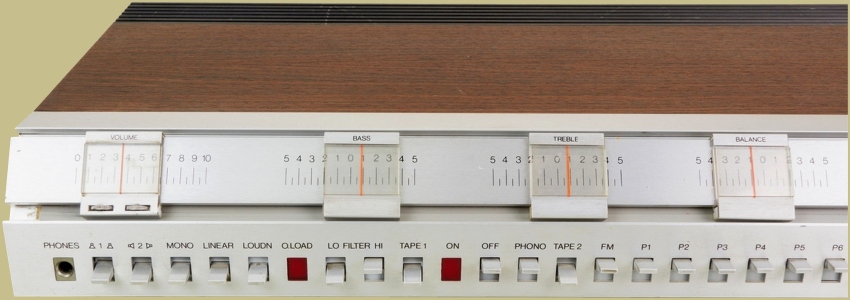
Front Panel
The Beomaster 4400 has a slick knobless design with horizontal sliders instead of old-school knobs. Across the top are five main sliders with clear plastic indicators that look like futuristic slide rules. The three middle sliders control bass, treble, and balance – you adjust these by hand. The outer sliders for volume and tuning also have little knurled wheels for finer adjustments. The reference scales for each control are marked out on the sloped front panel in black.
In the bottom row of controls, the headphone jack is on the left. Next are two speaker selectors – one lets you switch the second set of speakers out of phase to simulate “quadraphonic” surround sound. The mono switch combines both channels into one, while the linear mode bypasses all tone controls and filters for uncolored sound. A red “overload” indicator flashes if the amp get pushed into distortion.

After the high and low filters are switches to monitor tape deck 1, power on/off, and input selectors for phono, tape 2, FM, and six FM presets labeled P1-P6. The “AFC ST” switch engages the muting circuit to cut between-station noise when tuning.
Two red lights flank the tuning dial as center-channel indicators. If you tune off-center, the arrows tell you which way to adjust to equalize the light brightness, meaning you’re tuned right on the money. An edge-mounted meter shows signal strength and a stereo indicator.
Behind a removable cover are six thumbwheels to preset the FM frequencies for each station button. The wheels show rough frequency ranges so you know where you’ve tuned each preset. The small wheels are a bit awkward to adjust.
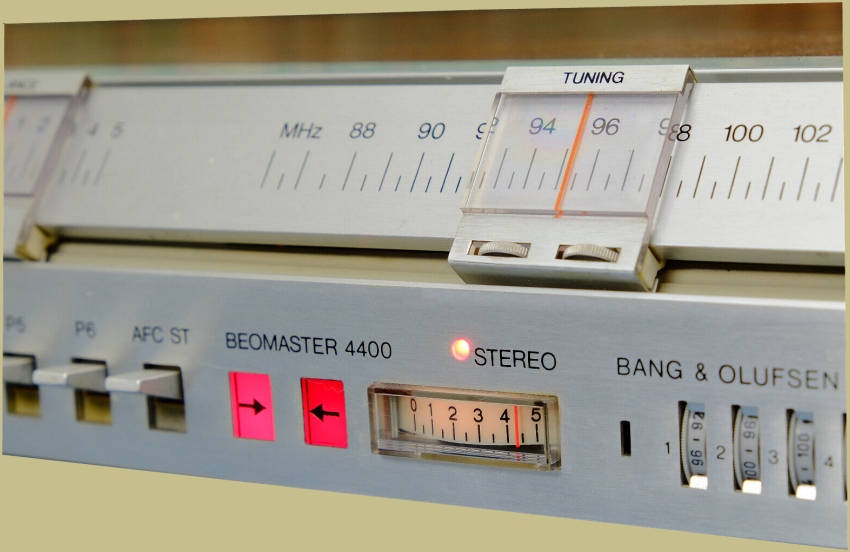
Ambio Mode
The ambiophonic function was B&O’s way of reproducing a recording’s natural spatial ambience. Most recordings contained some ambient information, but regular two-speaker systems could not reproduce this. The 4400 decoded this ambient content and could send it to two additional side-mounted speakers, creating a bigger, more immersive soundstage. This effect worked with most stereo content.
A switch on the rear panel changes the Ambiophonic loudspeaker sockets to act as normal stereo connections, for use with a second pair of loudspeakers in another room.
The B&O 4400 has a nice looking rosewood, teak or oak finish wood cabinet with ventilating slots over the output transistor heat sinks extending from the rear of the chassis. At less than 4 inches in height and 11 inches in depth it is difficult to work on due to space constraints.
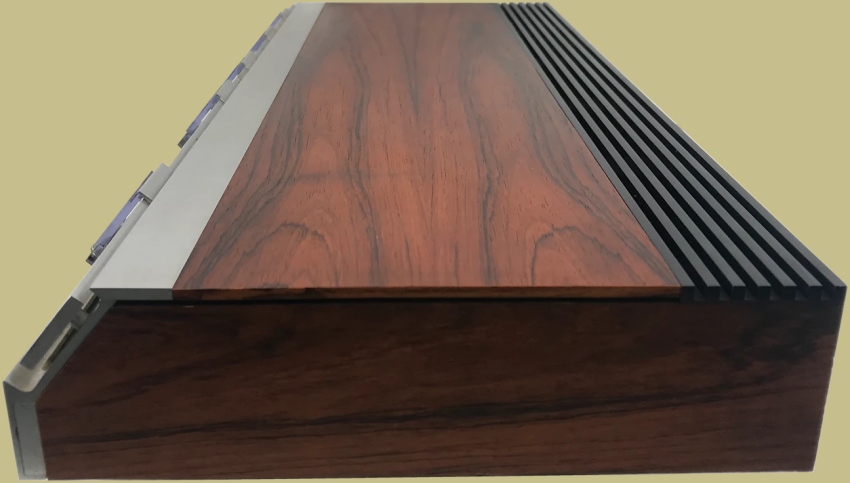
Tuner
B&O didn’t design the tuner in the Beomaster 4400 for extreme sensitivity or DXing. Instead, the focus is on low distortion and noise across the dial. It used modern innovations of the time like a quadrature detector and phase locked loop decoder, an auto frequency control minimized between-station noise when tuning, and auto-muting to prevent loud “thumps” when changing sources.
The tuner is sensitive with low distortion across the FM band but does require a strong signal for best performance. In an area with weak FM signals the tuner is likely to underperform other similar receivers unless you connect a good external antenna. One review of the time said:
The FM tuner sensitivity, as its rating suggests, was modest by modern standards.
B&O also used a Bessel filter in their circuitry that basically filtered signals above the audible range (I believe 20 kHz to 50 kHz) to eliminate transient intermodulation distortion.
I’ve heard, but not verified, that if the stereo indicator bulb goes out the circuit will mute the tuner as well.
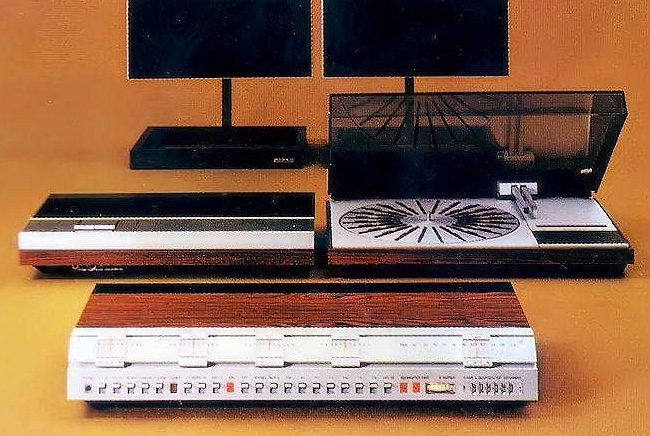
The Beomaster 4400 could be integrated into a full Beosystem setup with other B&O components. But even standalone, it was a state-of-the-art design for luxury receivers of its era.
There is a Beomaster 4401 model which is identical to the 4400 apart from its black faceplate instead of silver and offers similar performance. Very few 4401’s were made though so they are very hard to find.

Above is the bottom panel of the Beomaster 4400. There are channel volume adjustment controls for tape, phono and ST. Here are the instructions on their use from the manual:
While making the set-up you have a chance of matching the volume level, which may depend on the record player and tape recorder which are connected. The ideal condition is that you do not have to readjust the VOLUME control each time you select a program. The level controls are located in the bottom. They are marked PHONO, TAPE 1 and TAPE
2.
Using the FM level as starting point, set VOLUME at a convenient level. While playing a stereo record turn PHONO L
and PHONO R with the screwdriver which is supplied, until you have the same volume level and left / right balance as for FM. TAPE 1 and TAPE 2 are adjusted similarly while playing a tape. The sensitivity can be adjusted within these.
ranges: Phono 2-20 mV and Tape 180 mV – 2 V.
Adjustment of level for silent FM tuning: The control designated ST LEVEL (Silent Tuning Level) in the bottom of the receiver is factory preset so that the receiver is muted between stations. If an aerial system has a high noise level it may be necessary to readjust the ST LEVEL control until the noise disappears.
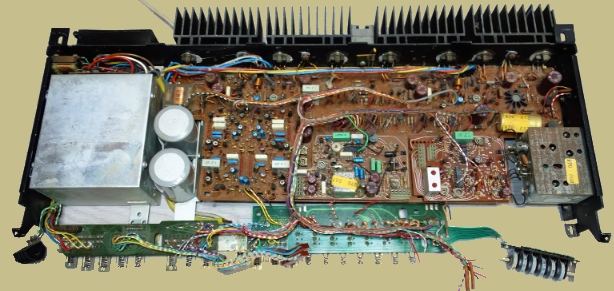
Amplifier
The B&O 4400 is rated to deliver 75 watts per channel to 4 ohm loads between 20 and 20,000 Hz with less than 0.1%. percent total harmonic distortion. It does not carry any 8 ohm rating.
The 4400 has a “linear” circuit in the amplifier section (controlled from a switch on the front panel). Engaging this switch bypasses the bass, treble and loudness circuits entirely. Removing these from the signal path slightly improves audio quality by ensuring the amplifier colors the sound as little as possible. For those who prefer fidelity over flavor, the 4400’s linear setting is a handy tool to keep the signal path clean.
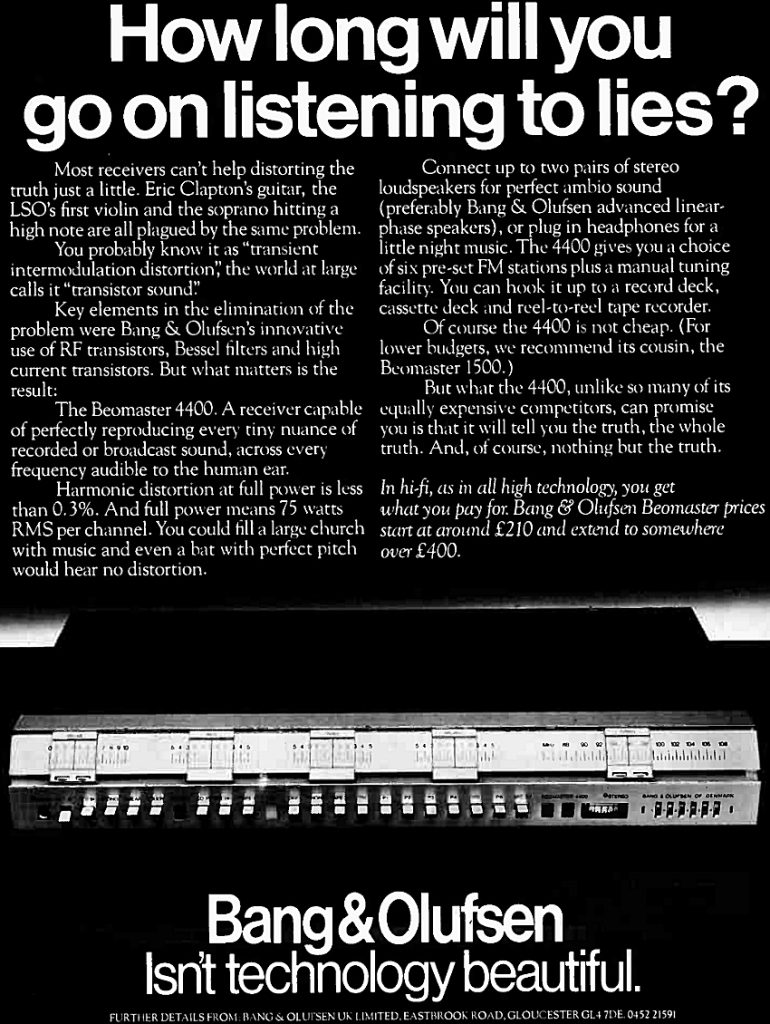
Specifications
- Price $850
- Dimensions 3 3/4 H x 22 5/8 W x 11 D
- Weight 22 lbs
- Quieting 18 dBf / 38 dBf
- SIN 70 dB / 67 dB
- Response 30 Hz to 15 kHz, +/- 1.5 dB/same
- THD 0.7% / 0.7%
- Separation 40 dB (1 kHz)
- Subcarrier 100 dB
- Capture 4 dB
- Selectivity 58 dB
- Power 75 watts (185 dBW) continuous from 20 Hz to 20 kHz at no more than 0.1% THD (4 ohm load)
- IM 0.1% at 70 watts
- Response 20 Hz to 35 kHz, +/- 15 dB
- Sensitivity 22 mV (phono); 200 mV (high level)
- Overload 80 mV (phono)
- S/N 60 dB (phono); 65 dB (aux) (un-weighted re 70 watts)
- Bass +/- 12 dB at 40 Hz
- Treble +/- 12 dB at 125 kHz
- High filter 12 dB/octave above 7 kHz
- Low filter 12 dB/octave below 60 Hz

Reviews
It looks like a real beauty even though it reminds me of my old slide rule!
The Beomaster 4400 is an excellent stereo receiver that offers a versatile and powerful audio experience and is easy to operate.

Rear Panel
The Beomaster 4400 features inputs for a turntable, two tape decks, and two pairs of speakers. The Tape 2 circuit does not provide for monitoring off the tape. It is meant to be used for a cassette recorder or as an auxiliary high level input. The switch for the ambio circuit is on the rear panel as well in case you just want to run two sets of speakers in stereo rather than ‘ambio’ mode. Note that all of the connections are DIN so you’ll need adapters if you want to use RCA connectors with the 4400. Fortunately you can find both female and male DIN to RCA adapters for the phono and tape connections on eBay. You can also find DIN speaker cables to connect non B&O speakers to the 4400.
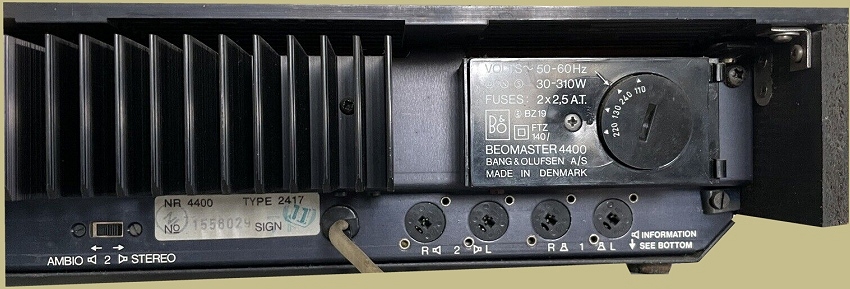
After testing the Beomaster 4400 in 1977, Hi-Fi Review concluded:
Its tuner section should be adequate for most listener locations, and one need have no reservations about the amplifier. Though not a powerhouse by contemporary standards, it is a first-rate performer.
The Beomaster 4400 is probably collected more for its design history (designed by the famous designer Jacob Jensen) and mid century modern look than its audio performance. That being said, it specifications are good. If you’re after an excellent tuner, the 4400 may not be the receiver for you, but its amplifier is very good, and its striking design is sure to attract a lot of attention.
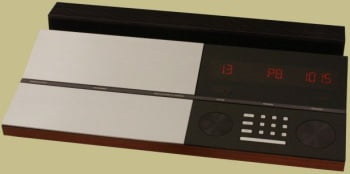
i have this reciever and the 4 beovox speakers there is some confusion as the speaker wires one has two female connectors does anyone have a diagram for hookup this was my fathers